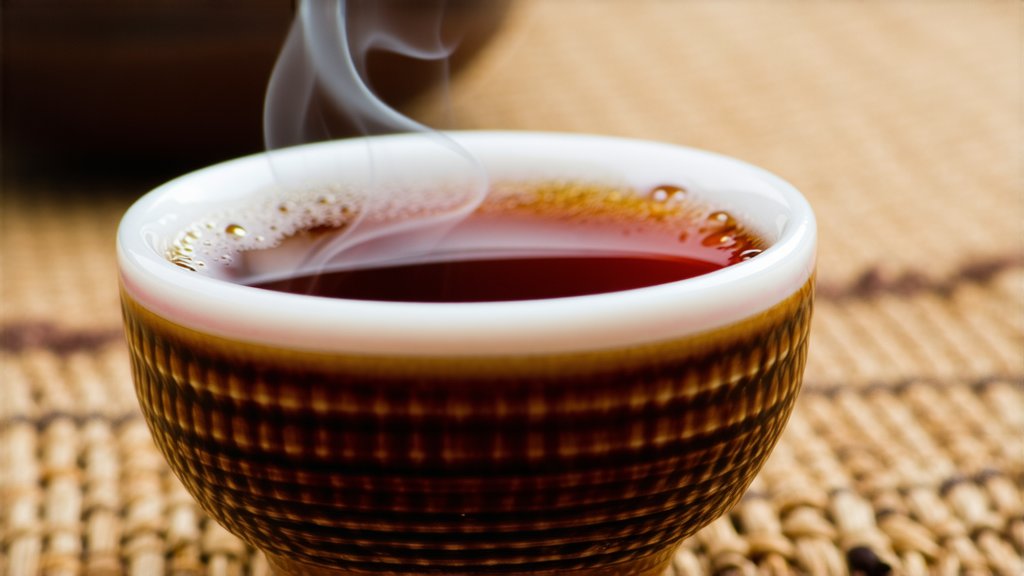
Lapsang Souchong, often referred to as "Smoky Lapsang" in English, is a distinctive variety of black tea that originates from the Fujian province of China, particularly in the mountainous region of Wuyi. This unique tea is renowned for its intense smoky flavor and aroma, which are imparted through an unconventional smoking process during its production. In this comprehensive exploration, we will delve into the history, types, production methods, brewing techniques, and sensory evaluation of Lapsang Souchong, offering international readers an in-depth understanding of this fascinating tea.
History and Origins
The story of Lapsang Souchong dates back to the early 19th century in the Wuyi Mountains, where tea has been cultivated for centuries. Legend has it that the discovery of this unique tea was accidental. It is said that during a particularly rainy season, tea producers were unable to dry their freshly picked leaves using traditional sun-drying methods. As a last resort, they used wood fires to dry the leaves, inadvertently imbuing them with a rich, smoky fragrance. This serendipitous event led to the creation of what would become one of the most distinctive and cherished black teas in the world.
Types of Lapsang Souchong
There are primarily two types of Lapsang Souchong: Souchong and Xiao Chou. Souchong, also known as "Grade 1," is considered the higher-quality version, featuring larger, more uniform leaves and a more pronounced smoky flavor. Xiao Chou, or "Grade 2," consists of smaller, less uniform leaves and has a milder smokiness. Both types share the characteristic smoky aroma but differ in intensity and complexity.
Production Process
The production of Lapsang Souchong involves several intricate steps that contribute to its unique character:
-
Withering: Freshly harvested tea leaves are spread out in bamboo trays and left to wither under controlled conditions, reducing moisture content and preparing the leaves for rolling.
-
Rolling: The withered leaves are then gently rolled by hand or with machinery, encouraging the release of natural enzymes that will aid in fermentation.
-
Fermentation: The rolled leaves are spread out to oxidize under warm, humid conditions, allowing the green leaves to turn coppery brown. This step is crucial for developing the depth of flavor and color in the final tea.
-
Smoking (Yan Hua): Unlike any other tea, Lapsang Souchong undergoes a smoking process called "yan huang." The fermented leaves are placed over pinewood fires in wooden chambers, absorbing the smoke's essence for several hours. This step not only imparts the signature smoky flavor but also preserves the tea, making it less susceptible to spoilage.
-
Drying: After smoking, the leaves are further dried over charcoal fires to reduce moisture content and stabilize the flavor profile.
-
Sorting and Grading: The dried tea is sorted and graded based on leaf size, shape, and quality, ensuring consistency in the final product.
Brewing Techniques
To fully appreciate the nuances of Lapsang Souchong, proper brewing is essential. Here's a recommended method:
-
Water Temperature: Use freshly boiled water (around 100°C or 212°F) to extract the best flavors from the tea leaves.
-
Tea Quantity: For a standard pot or cup, use approximately 5 grams of tea per 200ml of water. Adjust according to personal taste preference.
-
Steeping Time: Infuse the tea for 3-5 minutes, depending on your desired strength. A longer steep will yield a more robust and smoky flavor.
-
Multiple Infusions: Lapsang Souchong can be infused multiple times, with each subsequent brew revealing different layers of flavor and aroma. The first infusion is usually the most intense, while later ones offer subtler, sweeter notes.
Sensory Evaluation
When evaluating Lapsang Souchong, consider the following aspects:
-
Appearance: The dry leaves are typically dark and twisted, with a mix of whole and broken pieces. The brewed tea exhibits a deep amber color.
-
Aroma: The most striking feature is its smoky scent, reminiscent of campfire or barbecued meats. This is complemented by undertones of pine, fruit, and a slight earthiness.
-
Flavor: On the palate, Lapsang Souchong offers a complex interplay of smoky, woody, and slightly sweet flavors, with a hint of spice and a long-lasting aftertaste. The smokiness should be well-balanced, not overwhelming, allowing other flavors to shine through.
-
Texture: The mouthfeel is smooth yet full-bodied, with a pleasant astringency that lingers subtly on the tongue.
In conclusion, Lapsang Souchong stands as a testament to the creativity and ingenuity of Chinese tea artisans. Its unique production process, deeply rooted in tradition and terroir, results in a tea that is unlike any other. By understanding its history, mastering its preparation, and appreciating its sensory qualities, international tea enthusiasts can embark on a captivating journey through the smoky realms of this extraordinary Chinese black tea.